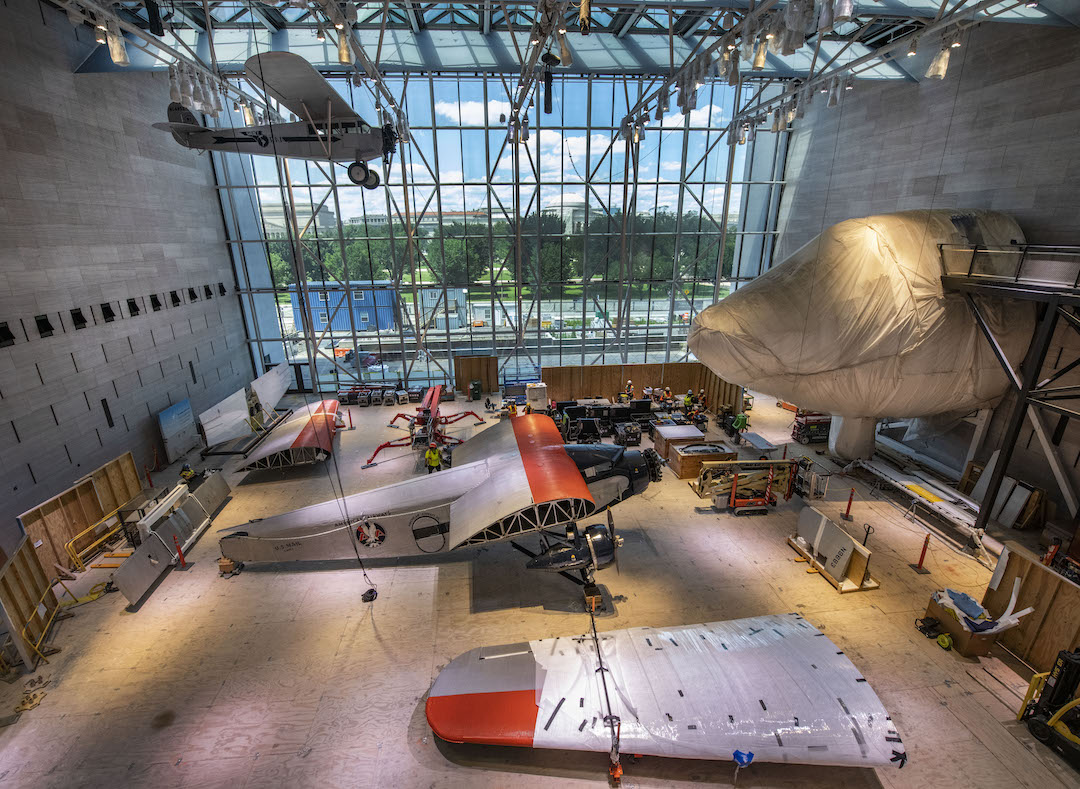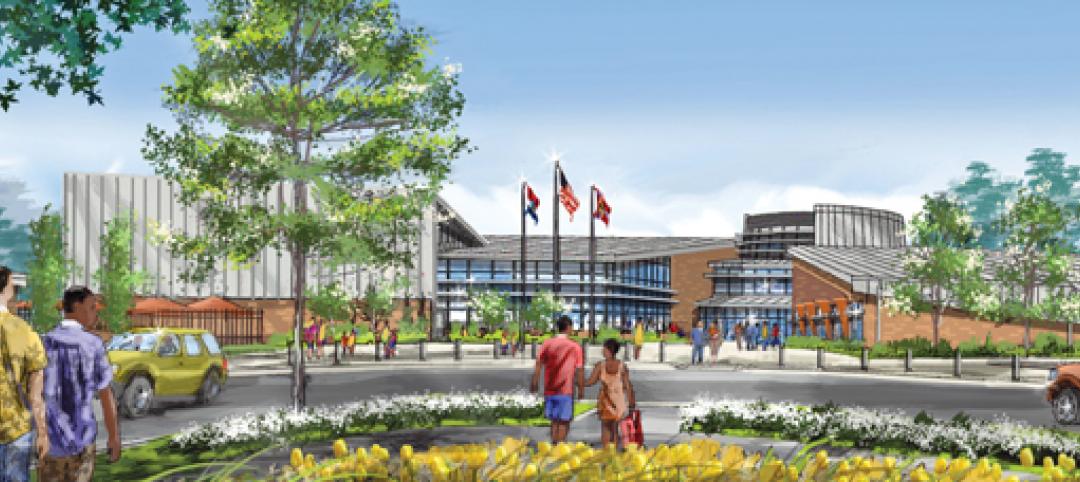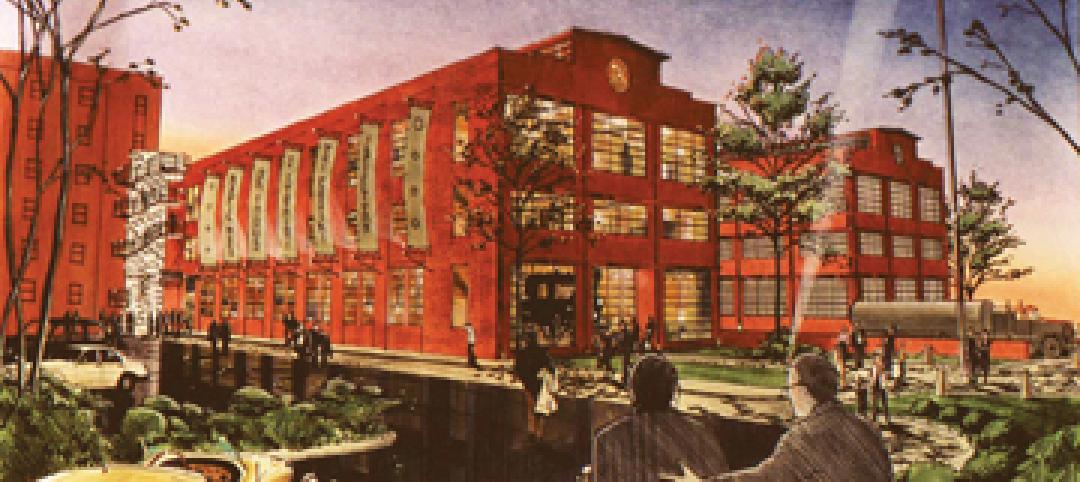One of Clark Construction Group’s cultural projects is the Orange County (Calif.) Museum of Art’s new three-story, 53,000-sf home for the Segerstrom Center for the Arts in Costa Mesa. Throughout the construction process for this $73 million project, Clark has facilitated tours for stakeholders and potential donors that recently included a breakfast on the jobsite.
Efforts like this to raise capital for cultural buildings became necessary during the COVID-19 health crisis. “For some cultural institutions, the pandemic has created a more challenging fundraising environment,” says Jared Oldroyd, Senior Vice President at Clark, who has been the executive in charge of several of the firm’s cultural contracts.
Oldroyd, like other AEC sources contacted for this article, have seen their cultural projects bounce back to life over the past 12 months. But the pandemic’s impact is likely to be longer-lasting when it comes to new construction and upgrading existing buildings to meet new air-quality and social-distancing norms.
For example, LeChase Construction is doing more with imaging technologies to communicate remotely with stakeholders, says its Vice President Lee Sommerman. That includes virtual real-time tours, increased use of drone imagery, and systems that upload images captured as a project team member walks the site.
As part of the OMA-led expansion of the New Museum in New York City, the architecture firm Cooper Robertson did extensive research into indoor air quality and visitor-staff circulation to ultimately determine that the building’s existing HVAC system met or exceeded guidelines set by the Centers for Disease Control and Prevention, says Erin Flynn, RA, LEED AP, Partner and Director of Architecture.
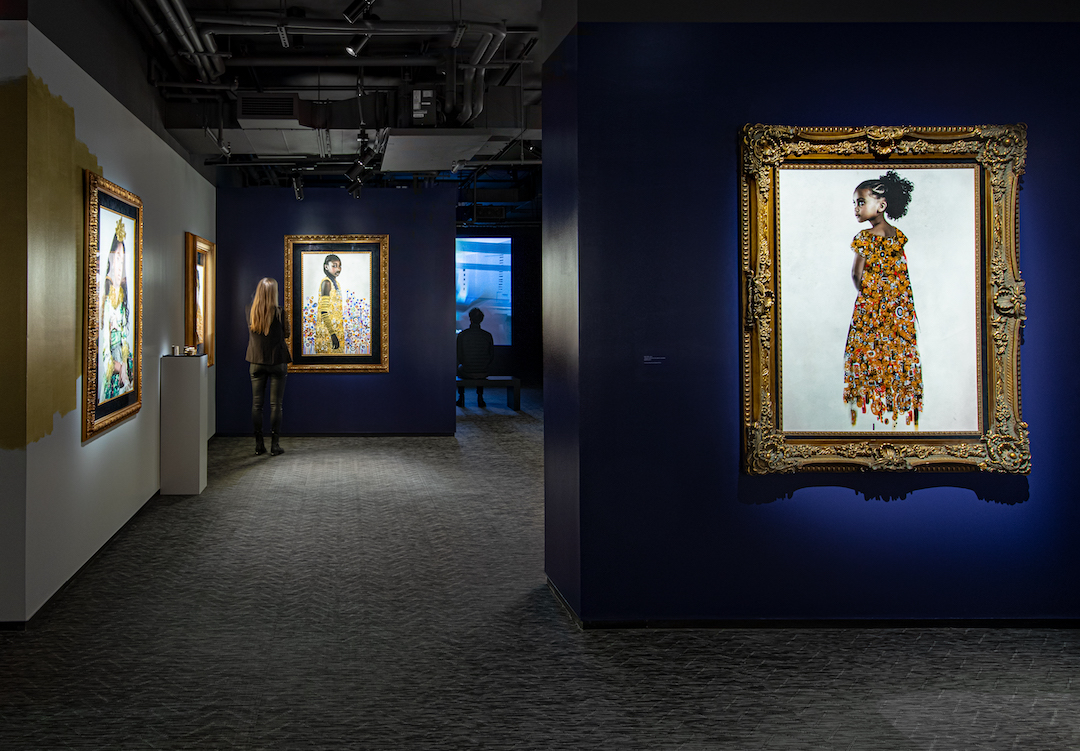
Flynn adds that another COVID-19 protocol now finds more cultural centers like museums enabling patrons to access information via their own mobile devices. Clark’s Oldroyd also sees a push by cultural centers toward interactive and immersive displays that incorporate more touchless elements, right down to the stylus that each visitor receives from the National Museum of the U.S. Army in Fort Belvoir, Va., one of the new constructions Clark completed in 2020.
Oldroyd points out that 75 percent of the overall exhibit area in the Museum of the Bible in Washington, D.C., features interactive and immersive experiences. To support such projects, his firm has been able to leverage the in-house expertise of its S2N Technology Group.
Fotografiska New York, a photography museum that’s an adaptive reuse of the 1894 Churches Mission House, creates a space for visitors to meet, eat, drink, and experience photography through an immersive series of rotating exhibits. Natural light was intentionally excluded from the gallery floors through the addition of interior walls, so that ambient light can provide a sense of intimacy with the artwork, explains Theresa M. Genovese, AIA, LEED AP, a Principal with CetraRuddy Architecture, which provided architecture and interior design services for this six-story, 45,000-sf project.
Genovese observes that, even before the COVID-19 outbreak and spread, some cultural institutions were investigating the so-called “distributed museum model,” which refers to pop-up or temporary exhibits or events that expand the reach of the facility and bring cultural programming to other physical or virtual spaces.
In that same vein, in markets where climate allows, some cultural institutions are blurring the boundaries between indoor and outdoor spaces. “Opaque boxes are giving way to transparency and connection to the external environment,” says David Herd, Managing Director of Buro Happold’s California Region.
RENOVATIONS IN DEMAND
AEC firms tell BD+C that they’ve seen renewed client interest for a variety of cultural and artistic venues. LeChase Construction has seen the greatest demand for performing arts centers. The firm, says Sommerman, was part of a $9.5 million historic renovation of the 32,336-sf Bent’s Opera House in Medina, N.Y. The renovation, designed by Kideney Architects, required extensive structural work on a three-story, 150-year-old building that had been vacant since 2010. The result is a mixed-use facility that, aside from the opera house on the third floor, includes a farm-to-table restaurant and a boutique hotel.
Renovations and expansions of cultural centers are also prevalent. Among Cooper Robertson’s recent cultural expansions are The Studio Museum of Harlem (designed in collaboration with Adjaye Associates), Albert-Knox Art Gallery in Buffalo, N.Y. (led by OMA), and the Rock & Roll Hall of Fame in Cleveland (led by PAU).
In Washington, D.C., a joint venture that includes Clark, Smoot, and Consigli has been leading the Smithsonian Institution’s largest renovation to date: the National Air & Space Museum revitalization, a multi-phase project that involves deconstructing the museum to its core structural elements, upgrading the structure to meet modern codes, and installing a stone-clad curtain wall, entrance canopy, MEP system, and finishes. Phase 1 should be completed by Spring 2022.
Pavarini McGovern, which is part of the STO Building Group, is nearing completion of the Davis Brody Bond-designed Irish Arts Center (IAC), a five-story expansion of what had been a former tire garage in New York’s Hell’s Kitchen neighborhood that adjoined the tenement building IAC had occupied since 1972. The new building requires a complex MEP system whose energy optimization “is a testament to the design,” says Mark Hildreth, Pavarini McGovern’s Project Manager.
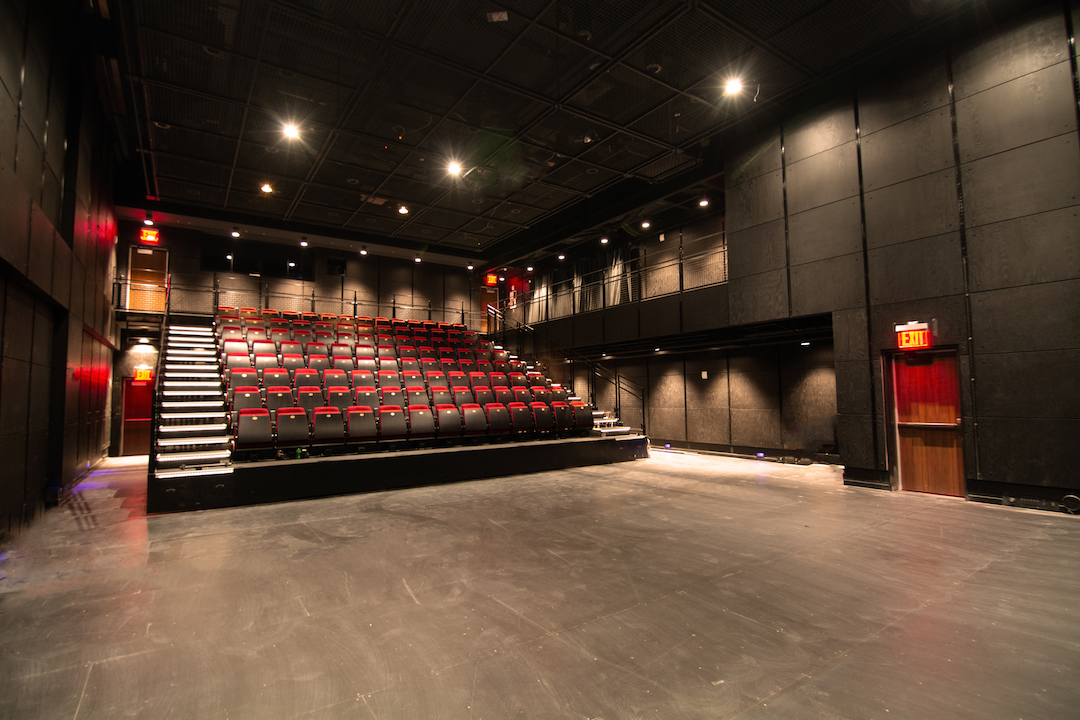
Several sources confirm that their cultural clients are seeking energy efficient solutions for their projects. Shawmut Design and Construction’s recent completion of the Philip Roth Personal Library at Newark (N.J.) Public Library, designed with Ann Beha Architects and C&G Partners, added new MEP and fire protection systems as well as humidity and temperature controls. This 8,860-sf project also features a new HVAC system for Centennial Hall, the building’s lecture hall and event space.
Studio Ma’s recent cultural projects include the Museum of the West in Scottsdale, Ariz., whose tilt-up construction and flexible floor plan helped reduce its overall cost to half that of similar buildings. Passive design principles, such as self-shading the building from sun and heat gain by use of overhanging metal scrims on the second floor, lower the museum’s energy costs by 38 percent compared to peer buildings, says Christiana Moss, FAIA, Studio Ma’s Co-founder and Principal. The building recycles water for humidification, and condensate is diverted to a runnel that connects to a bioswale that can also handle up to 42 gallons per hour of roof rain runoff. These sustainability measures allow the museum to operate with only 45 percent of the water used by peer facilities.
Connecting the cultural building to its community is also an essential, and provides more opportunities for outdoor programming, says Flynn of Cooper Robertson. In Arizona, Studio Ma’s design of the Native American Cultural Center is informed by an Indigenous Planning Process that involved representatives from 22 Arizona tribal communities.
Related Stories
| Feb 11, 2011
Four-story library at Salem State will hold half a million—get this—books!
Salem State University in Massachusetts broke ground on a new library and learning center in December. The new four-story library will include instructional labs, group study rooms, and a testing center. The modern, 124,000-sf design by Boston-based Shepley Bulfinch includes space for 500,000 books and study space for up to a thousand students. Sustainable features include geothermal heating and cooling, rainwater harvesting, and low-flow plumbing fixtures.
| Jan 21, 2011
Sustainable history center exhibits Fort Ticonderoga’s storied past
Fort Ticonderoga, in Ticonderoga, N.Y., along Lake Champlain, dates to 1755 and was the site of battles in the French and Indian War and the American Revolution. The new $20.8 million, 15,000-sf Deborah Clarke Mars Education Center pays homage to the French magasin du Roi (the King’s warehouse) at the fort.
| Jan 21, 2011
Library planned for modern media enthusiasts
The England Run Library, a new 30,000-sf glass, brick, and stone building, will soon house more than 100,000 books and DVDs. The Lukmire Partnership, Arlington, Va., designed the Stafford County, Va., library, the firm’s fourth for the Central Rappahannock Library System, to combine modern library-browsing trends with traditional library services.
| Jan 21, 2011
Music festival’s new home showcases scenic setting
Epstein Joslin Architects, Cambridge, Mass., designed the Shalin Liu Performance Center in Rockport, Mass., to showcase the Rockport Chamber Music Festival, as well at the site’s ocean views.
| Jan 20, 2011
Worship center design offers warm and welcoming atmosphere
The Worship Place Studio of local firm Ziegler Cooper Architects designed a new 46,000-sf church complex for the Pare de Sufrir parish in Houston.
| Jan 20, 2011
Construction begins on second St. Louis community center
O’Fallon Park Recreation Complex in St. Louis, designed by local architecture/engineering firm KAI Design & Build, will feature an indoor aquatic park with interactive water play features, a lazy river, water slides, laps lanes, and an outdoor spray and multiuse pool.
| Jan 19, 2011
Industrial history museum gets new home in steel plant
The National Museum of Industrial History recently renovated the exterior of a 1913 steel plant in Bethlehem, Pa., to house its new 40,000-sf exhibition space. The museum chose VOA Associates, which is headquartered in Chicago, to complete the design for the exhibit’s interior. The exhibit, which has views of five historic blast furnaces, will feature artifacts from the Smithsonian Institution to illustrate early industrial America.
| Jan 19, 2011
San Diego casino renovations upgrade gaming and entertainment
The Sycuan Casino in San Diego will get an update with a $27 million, 245,000-sf renovation. Hnedak Bobo Group, Memphis, Tenn., and Cleo Design, Las Vegas, drew design inspiration from the historic culture of the Sycuan tribe and the desert landscape, creating a more open space with better circulation. Renovation highlights include a new “waterless” water entry feature and new sports bar and grill, plus updates to gaming, poker, off-track-betting, retail, and bingo areas. The local office of San Francisco-based Swinerton Builders will provide construction services.
| Jan 19, 2011
New Fort Hood hospital will replace aging medical center
The Army Corps of Engineers selected London-based Balfour Beatty and St. Louis-based McCarthy to provide design-build services for the Fort Hood Replacement Hospital in Texas, a $503 million, 944,000-sf complex partially funded by the American Recovery and Reinvestment Act. The firm plans to use BIM for the project, which will include outpatient clinics, an ambulance garage, a central utility plant, and three parking structures. Texas firms HKS Architects and Wingler & Sharp will participate as design partners. The project seeks LEED Gold.
| Jan 19, 2011
Museum design integrates Greek history and architecture
Construction is under way in Chicago on the National Hellenic Museum, the nation’s first museum devoted to Greek history and culture. RTKL designed the 40,000-sf limestone and glass building to include such historic references as the covered walkway of classical architecture and the natural wood accents of Byzantine monasteries. The museum will include a research library and oral history center, plus a 3,600-sf rooftop terrace featuring three gardens. The project seeks LEED Silver.


